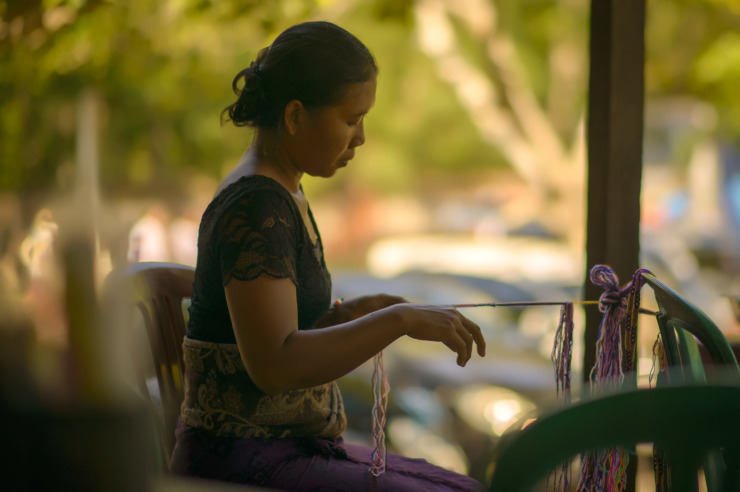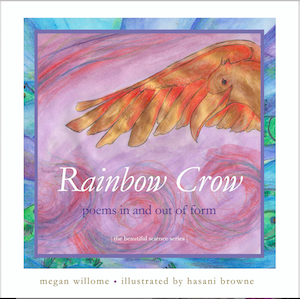Mother to Son: No Crystal Stair
Right before Easter I walked into Bath & Body Works to see if they had any candles on sale, and they did not—everything was full price, in preparation for Mother’s Day. I didn’t want a faux-mother blend of flower-scented cocktails. I wanted something stronger, a candle for a mother who falls and does not give up. Because I have found motherhood to be complicated, I like complicated poems about it. I walked out of the store without buying anything, with the words of Langston Hughes’ “Mother to Son” ringing in my mind.
Langston Hughes is one of our Take Your Poet to Work Day faves. He was a central figure in the Harlem Renaissance, a movement of Black artists, musicians, and writers in the 1920s. (We’ve read Passing, by Nella Larsen, who was part of the movement as well.) Hughes was criticized by some Blacks for his portrayal of middle- and working-class people, while others celebrated him for these very portrayals. He was among the first Black writers to make a living as a novelist, playwright, and poet. His mother, Carolina (Carrie) Langston Mercer Hughes, attended Oberlin College and was a writer herself. But her life was filled with hardship. Langston was mostly raised by his grandmother, Carrie’s mother.
As I have sat with this poem, I’ve been thinking about what the mother described by Hughes might be imagining when twice she says, “Life for me ain’t been no crystal stair.” What is she picturing? My mind flashes to the ice staircase Elsa builds with a flick of her magical wrist in Frozen. That staircase is designed to isolate and protect. The non-existent crystal stair in this poem, if it did exist, would serve as a means for this mother to pull up her son. And it seems he needs pulling.
In the middle of the poem, she addresses him:
So boy, don’t you turn back.
Don’t you set down on the steps
’Cause you finds it’s kinder hard.
Don’t you fall now—
Why would she say those things unless he was the kind of boy who did turn back, who did sit down when things get hard, who did sometimes fall?
I’ve also been fascinated by the repetition of the contraction I’se, which occurs three times. The poem was first published 100 years ago, in 1922, which means this word has been in our lexicon for quite a while, if not in our grammar texts. But grammar is ever-changing.
I had a college professor who once wrote j’eet on the blackboard and asked the class if any of us could tell him what it meant. Nope. It’s a contraction, he said. Still no. This class meets right after lunch—I hear you say this every day. No again. Then he spoke the word: J’eet? And we heard it: Did you eat?
J’eet has not officially entered our vocabulary, but I hear I’se all the time. Difference in tone provides subtle difference in meaning: whether you are doing the thing or are about to do it or have been doing it and will continue to do it until the end of time, forever and ever, amen.
Like the mother in this poem. She will always be climbin’, always be goin’, always be climbin’ (it’s worth saying twice). Life hasn’t been what she thought it would be—not for her and not for her son. She doesn’t need candles that smell like lavender mimosas and peach bellinis. She needs a good sturdy pair of shoes. And a son to appreciate her, as I believe Langston Hughes did.
Normally I end this column with a recording of myself reciting By Heart the month’s poem. As a white woman, I am reluctant to record myself speaking the words of one of America’s most honored Black poets. Although I found a recording of Hughes reading “Mother to Son“, I found something even better: I found a version read by Viola Davis. This one is for all the mothers who have not yet found that crystal stair.
By Heart for June
Did you listen to Sergei Prokofiev’s Peter and the Wolf when you were growing up? Or did you hear it performed by a symphony on a school field trip? For June we’ll learn A.E. Stallings’ poem “Listening to Peter and the Wolf with Jason, aged 3″ By Heart.
Listening to Peter and the Wolf with Jason, Aged 3
Eyes wide open, grinning ear to ear,
Balanced between the thrill of fear and fear,
He clutches at my skirt to keep me near
And will not let me leave him by himself
In the living room where Peter and the Wolf
Emerges from the speakers on the shelf.
He likes Peter’s jaunty swing of strings,
The reedy waddle of the duck, the wings
That flute up in the tree, but still he clings
(Even though for now it’s just the cat
Picking its slinky way through sharp and flat);
He isn’t frightened of a clarinet,
And laughs at grandfather’s bluster and bassoon,
But keeps his ear out for another tune
At the shadowy edge of the wood, and coming soon.
Where is the wolf? he asks me every chance
He gets, and I explain each circumstance;
Though it’s not as if he’s heard it only once—
You’d think he’d know by now. Deep in the wood,
Or under the tree, or sent away for good
To the zoo, I say, and think he’s understood,
And weary of the question and the classic,
I ask him where the wolf is. With grave logic
He answers me, The wolf is in the music.
And so it is. Just then, out of the gloom,
The cymbals menace and the French horns loom.
And the music is loose. The music’s in the room.
–A.E. Stallings
Photo by cloud.shepherd, Creative Commons, via Flickr. Post by Megan Willome.
Browse more By Heart
“Megan Willome has captured the essence of crow in this delightful children’s collection. Not only do the poems introduce the reader to the unusual habits and nature of this bird, but also different forms of poetry as well.”
—Michelle Ortega, poet and children’s speech pathologist
- Perspective: The Two, The Only: Calvin and Hobbes - December 16, 2022
- Children’s Book Club: A Very Haunted Christmas - December 9, 2022
- By Heart: ‘The night is darkening round me’ by Emily Brontë - December 2, 2022


Leave a Reply